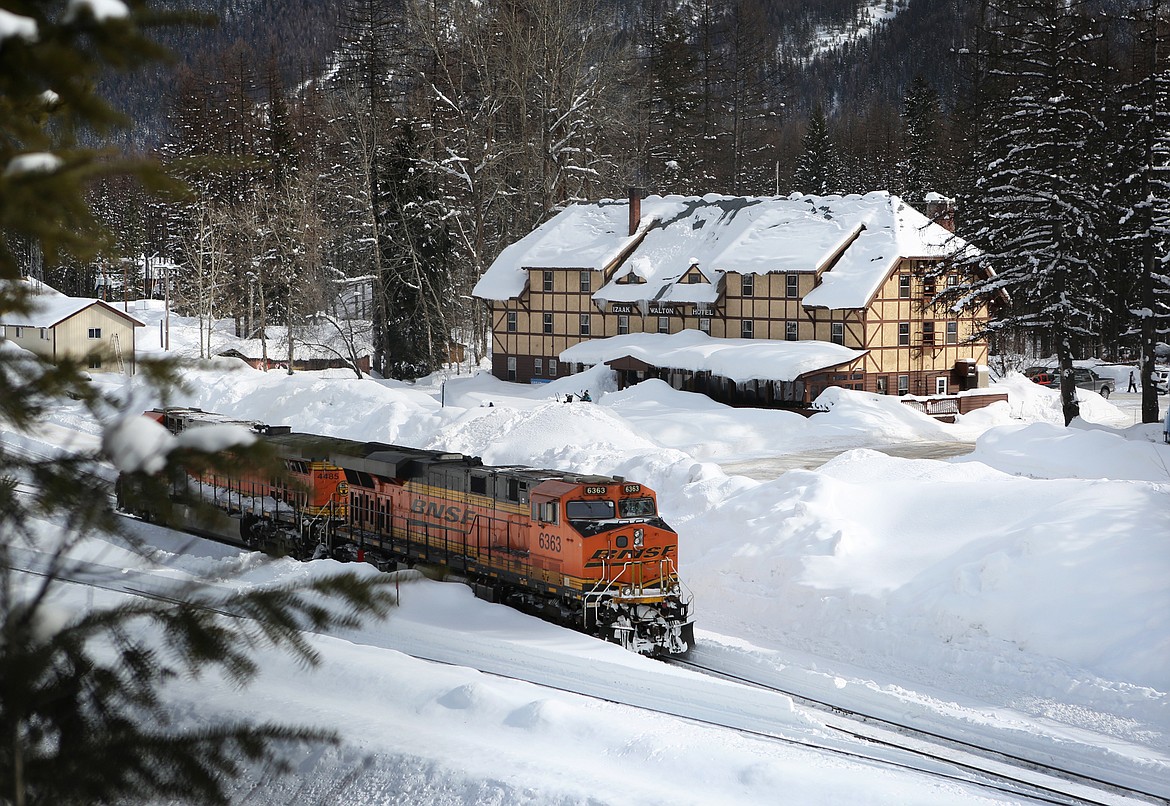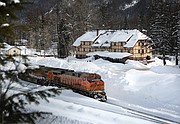Groups threaten to sue BNSF over bear deaths
A growing number of grizzly bear fatalities along Montana’s railroad tracks has prompted two conservation groups to submit a letter to BNSF Railway Co., announcing their intentions to sue the agency for violating the federal Endangered Species Act.
WildEarth Guardians and Western Watersheds Project, represented by the Western Environmental Law Center, presented the Notice of Intent to BNSF officials on Oct. 19., according to legal documents.
The company has been given 60 days to respond before a lawsuit is filed.
The notice states BNSF has violated and remains in ongoing violation of the Endangered Species Act by “taking” grizzly bears with its trains, particularly in the West and Northern Continental Divide and Cabinet Yaak ecosystems. The document outlines broad definitions for the word “take,” including “to harass, harm, pursue, hunt, shoot, wound, kill, trap capture, or collect, or attempt to engage in any such conduct.”
Portions of the railway that are owned, operated or used by BNSF lie within, or are adjacent to, the recovery area for grizzly bears that is located in the Northern Continental Divide in Northwest Montana.
The zone stretches for more than 8,900 square miles and is 85% comprised of public lands, including Glacier National Park, parts of the Flathead and Blackfeet Indian reservations, portions of five national forests, including the Flathead National Forest, and more. Five federally designated wilderness areas, including the Bob Marshall Wilderness Complex, also lie within the region.
The majority of the train tracks in the recovery area are confined to valley bottoms and passes and are bound by mountains — areas where grizzlies frequent to feed, forage and find other habitats.
The notice refers to “some of the best available commercial and scientific data” to show from 1980 to 2018, trains “owned, operated, leased, or otherwise in the control or authority of BNSF” “killed or caused the killing” of 52 grizzly bears from the Northern Continental Divide ecosystem. Montana Fish Wildlife and Parks started gathering grizzly bear train mortality data in that area in 1971. The data, which accounts for all deaths by train but does not distinguish which incidents included BNSF versus other companies, shows 65 grizzlies have been killed in the Northern Continental Divide to date.
According to state data, 2019 has seen more grizzly train mortalities than any recorded year prior, at eight deaths. The second highest tally occurred in 2007, 1999 and 1990, with each of those years experiencing five deaths.
The letter points to the frequency, time of day and the speed at which trains travel as a potential part of the problem. An average of 1.2 to 1.5 trains run per hour on the railways in Montana that are owned, operated or used by BNSF. But train volume increases slightly at twilight and night-time to a high of 1.75 trains per hour — a finding the letter says may partially be because track maintenance is performed during day-time hours.
Those night-time hours are also when grizzlies are typically the most active. The letter further states grizzlies may be crossing highways that are adjacent to railways at night because there is less traffic than in the daytime.
“That may matter because (1) grizzlies feed during twilight hours and (2) along the BNSF Railway Co. and/or Burlington Northern Santa Fe, LLC railways, train volume slightly increases at twilight and night-time,” according to the notice.
The notice also points to a 2019 study that found “a peak of grizzly mortalities during May is followed by a decline through the end of summer, after which mortalities rise to a second peak during September and October.”
The report outlines three possibilities for the seasonal nature of most train-caused mortalities: exposed, snow-free herbaceous vegetation along railways compared to surrounding lands in the spring; carrion on or near railways from the ungulates killed by train strikes in the winter; and leaked grain from hopper cars after grain harvests in the fall.
A statement from BNSF noted the number of trains operating through an area is “driven by the volume and timing of freight shipments from our customers. The movement of rail traffic is highly variable depending on factors including market conditions, weather, and maintenance needs.”
LESS THAN one month ago, Fish, Wildlife and Parks reported two bear cubs were killed by a train in Trego. Earlier this summer, three grizzlies were killed by trains near Glacier National Park in the Marias Pass area, to name a few incidents.
Those are only a few of the most recent grizzly deaths recorded, but the Northern Continental Divide ecosystem has a documented history of train-bear confrontations.
“There are multiple reasons a grizzly may wander towards the tracks, but the thing that gets bears in trouble no matter what are food attractants,” said Dillon Tabish with Fish, Wildlife and Parks Region 1.
In the mid-1980s through the 1990s, it was noted that grizzly bears were wandering toward train tracks where grain and corn had fallen from the tops of uncovered train cars. The spillage caused a steep spike in grizzly bear fatalities as is evident in state data that shows 23 bears died by train collisions from 1985 to 2000, or about 35% of total grizzly deaths from 1971 to present.
It was noted in a 2005 article by the Daily Inter Lake that “back then [in the 1980s and 1990s], some spills were simply buried along tracks. Despite being covered, fermenting corn or grain attracted bears to the tracks for years.” The article also noted that “bear specialists with Montana Fish, Wildlife and Parks say the railroad has considerably improved its response and cleanup practices...”
The statement from BNSF highlights those improvements throughout the years.
“BNSF modified its vegetation management practices, improved the identification and cleanup of spilled grain, and expanded its carrion removal practices. Since beginning this work, there have been many years where no bears have been hit on the tracks, most recently in 2015. BNSF has undertaken this project voluntarily, with guidance and input from bear managers from Montana Fish Wildlife & Parks and the Blackfeet Nation, and with the support of the U.S. Fish & Wildlife Service.”
As the grizzly bear population recovers and grows, BNSF’s statement added the company is “committed to working diligently to minimize the potential for bear strikes on the rail.”
Reporter Kianna Gardner may be reached at 758-4407 or kgardner@dailyinterlake.com



